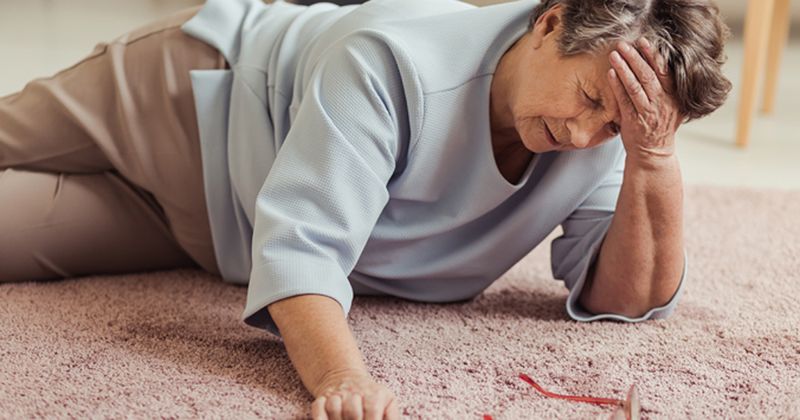USPSTF recommends exercise to prevent falls among older adults
Key takeaways:
- The USPSTF recommended multifactorial interventions alongside exercise for fall prevention.
- Fall risk factors include home or work hazards, adverse events of medication and sensory problems.
The U.S. Preventive Services Task Force has released a draft recommendation advising exercise for community-dwelling adults aged 65 years and older who are at risk for falls.
The recommendation is a B grade.

The USPSTF also encouraged health care professionals to talk with older patients about whether further interventions could help reduce their risk for falling, a C grade.
“Falls are the leading cause of injuries in older adults and can even lead to death,” Li Li, MD, PhD, MPH, a USPSTF member and the Walter M. Seward Professor and chair of family medicine at the University of Virginia School of Medicine, said in a press release. “The good news is that exercise can reduce the risk of falls in adults 65 and older, resulting in improved physical well-being of older adults.”
The draft recommendation aligns with the task force’s 2018 final recommendation on fall interventions among older adults. However, unlike the previous recommendation, the draft statement does not address the use of vitamin D to prevent falls. Instead, the USPSTF said it is evaluating evidence on the use of vitamin D as well as calcium and combined supplementation as fall prevention interventions in a separate recommendation.
According to the CDC, one in four older adults fall each year, but less than half tell their clinician.
The task force noted that clinicians should consider age and history of falling when determining which patients are more likely to fall. Other risk factors include:
- hazards at work or home;
- sensory problems;
- medications that could increase the risk for falls;
- alcohol or drug use; and
- certain physical aspects of an individual’s home or neighborhood.
In the draft evidence review, Janelle M. Guirguis-Blake, MD, and colleagues assessed 83 randomized controlled trials (n = 48,839) to determine the effectiveness of interventions in preventing falls. They found that exercise was linked to a significant reduction in the number of falls (incidence rate ratio [IRR] = 0.85; 95% CI, 0.75-0.96), as were multifactorial interventions (IRR = 0.84; 95% CI, 0.74-0.95).
According to the USPSTF, multifactorial interventions help physicians assess and address fall risks and may be tailored to each patient. These interventions include:
- cognitive behavioral therapy;
- environmental modification;
- education;
- urinary incontinence management;
- medication management;
- social or community services;
- specialist referrals; and
- nutrition therapy.
“Additional interventions beyond exercise can help some older adults further reduce their risk of falling,” USPSTF member James Stevermer, MD, MSPH, medical director of the University of Missouri Health Care Family Medicine–Callaway Physicians, said in the release. “Clinicians can talk to patients about their personal circumstances, such as history of past falls and values and preferences, to help determine who may, or may not, benefit.”
Comments on the draft recommendation can be submitted here from Dec. 5 through Jan. 8.
References:
- Facts about falls. https://www.cdc.gov/falls/facts.html. Accessed Nov. 29, 2023.
- Falls prevention in community-dwelling older adults: Interventions. https://www.uspreventiveservicestaskforce.org/uspstf/recommendation/falls-prevention-in-older-adults-interventions. Published April 17, 2023. Accessed Nov. 29, 2023.
- Interventions to prevent falls in older adults: Updated systematic review for the U.S. Preventive Services Task Force. https://www.uspreventiveservicestaskforce.org/uspstf/document/draft-evidence-review/falls-prevention-community-dwelling-older-adults-interventions. Published Dec. 5, 2023. Accessed Dec. 5, 2023.
- Interventions to Prevent Falls in Community-Dwelling Older Adults: U.S. Preventive Services Task Force Draft Recommendation Statement. https://www.uspreventiveservicestaskforce.org/uspstf/draft-recommendation/falls-prevention-community-dwelling-older-adults-interventions. Published Dec. 5, 2023. Accessed Dec. 5, 2023.
- Task force issues draft recommendation statement on interventions to prevent falls in older adults. https://www.uspreventiveservicestaskforce.org/uspstf/sites/default/files/file/supporting_documents/falls-prevention-older-adults-draft-rec-bulletin.pdf. Published Dec. 5, 2023. Accessed Dec. 5, 2023.
